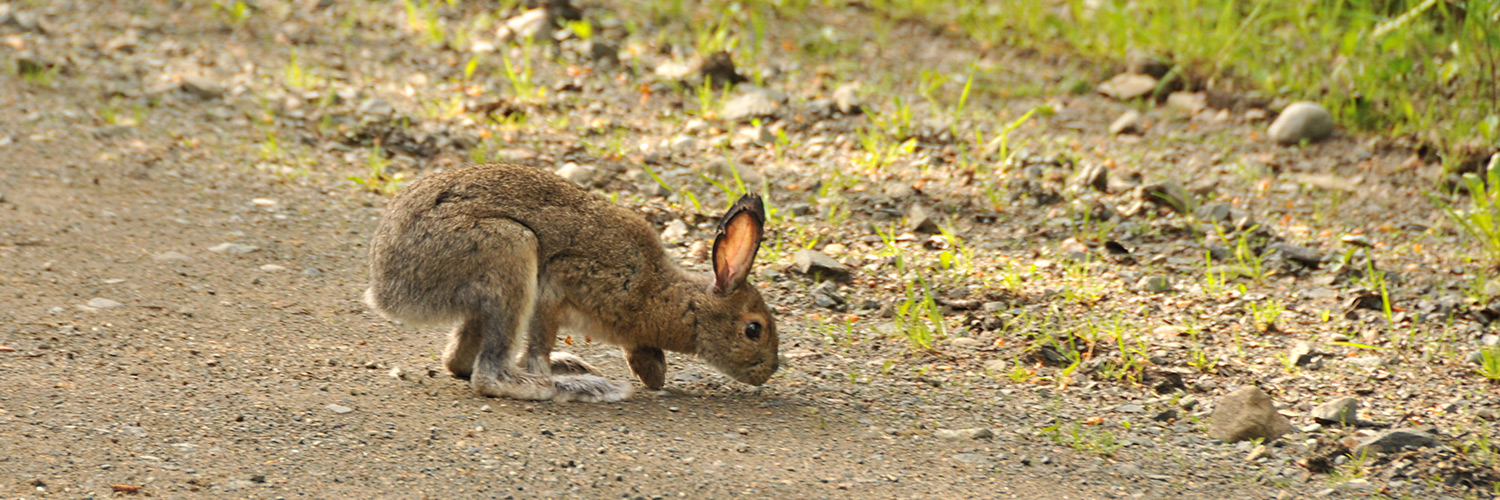Dr. Karen E. Hodges | Professor, Conservation Biology
Population Dynamics
Snowshoe hares: impacts of fragmentation and isolation on population dynamics of a keystone forest herbivore
Snowshoe hares, Lepus americanus, have a 10 year population cycle, which affects many other species in the boreal and montane forests of North America; they are a keystone herbivore. I am interested in understanding the causes of the cycle, variation in the cycle across space and time, and habitat factors contributing to regional densities and dynamics of hares, Canada lynx, Lynx canadensis, are listed as threatened in the contiguous US. Lynx are a specialist predator on snowshoe hares, but lynx populations in the US have declined over the last several decades. Habitat loss (via development, fire, and forestry activities) is one possible cause for lynx declines, especially as recently disturbed habitats support fewer hares than do regenerating or mature forests.
I have been collaborating with other academics and people from state / provincial and federal agencies on these questions. Our work has involved research areas in Montana (two national forests and Glacier National Park), Wyoming (Yellowstone National Park), the North Cascades of Washington (Okanogan National Forest), and southern and central British Columbia. In each area, habitat quality varies significantly for snowshoe hares, as well as the landscape context surrounding individual high-quality patches. Some areas have relatively large areas of suitable to high-quality hare habitat, whereas others are heavily fragmented by fire or by forestry activities and have areas that are essentially unsuitable for hares. We are obtaining demographic and genetic information to address how habitat quality and landscape patterns affect movements, foraging, and population dynamics of snowshoe hare populations. We are also using several modelling approaches to enrich our understanding in these areas.
Snowshoe hares also offer a number of opportunities for behavioural work, and I have enjoyed using information from tracking, browse, and radio-collars to understand how hares navigate complex habitats and landscapes.
